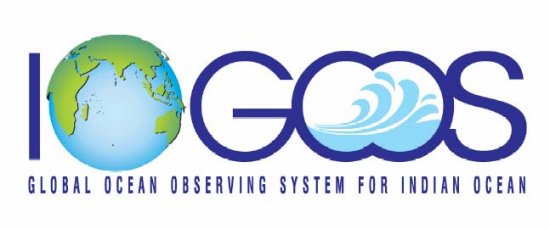ESSO - Indian National Centre for Ocean Information Services
(An Autonomous Body under the Ministry of Earth Sciences, Govt. of India)
Working Group on Habitat/Biodiversity
Chair: Greg Wagner, Tanzania Rapporteur: Mohideen Wafar, India
The Working Group proposed a pilot project on Multi-scale Monitoring and Mapping of Keystone Coastal Ecosystems.
Greg Wagner presented the report.
The pilot project has the following characteristics.
- Keystone ecosystems
- Project Objectives
- Basic Variables to be monitored
- Preferred Methods
- Expected Outputs
- Capacity-building
- Institutional and infrastructural development
- International co-operation
- Sustainability
Keystone Ecosystems
Coral reefs, mangroves, and seagrass beds (because small impacts on them lead to larger and more widespread ones; they are cost-effective targets for conservation; there is inadequate information on the extent of loss and rate of degradation).
Project objectives
Monitor the keystone ecosystems by large-scale remote sensing, by small-scale remote-sensing in specific areas, by community-based monitoring at specific sites under the supervision of scientists; and disseminate information to governments, to integrated coastal-zone management programs, to communities and fishermen (especially those dependent on the mangrove ecosystem), tourist organizations, and to the IOGOOS network.
Basic Variables to be monitored
A phased approach, beginning with assessment and a shoreline monitoring system; incorporation of local funding; then development of analytical and modeling capability as data become available.
- Area cover
- chlorophyll
- suspended sediment in the water column
- shoreline
- species composition in some habitats
- coastal bathymetry
For coral reefs :
community-based monitoring will include benthic cover, in terms of-hard coral, soft coral, dead coral; algae, rubble, sand, rock; macroinvertebrate density (sea urchins, sea cucumbers, starfish, gastropods, bivalves, etc.); fish census (to family or other appropriate major taxon). Scientists will measure in situ: special aspects of biodiversity; nutrient levels; temperature, salinity, dissolved oxygen.

For mangroves :
density and diversity of mangrove species; density of main life stages (seedlings, saplings, trees); basal area of mangrove.
For seagrass beds :
area cover; species composition; macroinvertebrate density (epifauna only).
Preferred Methods
For coral reefs : simplified linear transects, with a minimum of 6-10 transects per reef.
For mangroves : 5-m × 5-m plots, with a minimum of 30 plots per mangrove area.
For seagrass beds : 0.5-m × 0.5-m quadrats, with a minimum of 100 quadrats per bed.
The measurement basis : long-term time-series measurements made by the community on a regular basis (e.g., every six months or one year) over a long period, along with regular analysis of remote-sensing data; large-scale, spatially synoptic measurements to be taken at the same time with the same method(s) in various places over a wide area.

Expected Outputs
As appropriate, baseline data on and maps of the keystone ecosystems (coverage, habitat characteristics, species density, composition and biodiversity); spectral analysis of remote-sensing data; statistical comparisons of remote sensing and community-based data; indices of change and predictions of important changes; recommendations on conservation and restoration strategies; enhancement of environmental awareness.
Capacity-building
Training of community members involved in coastal ecosystem monitoring in the relevant techniques; strengthening the capacity of the concerned regional, national and local government agencies through acquisition of equipment and staff training in monitoring techniques, data-base management, data analysis and interpretation. Environmental NGOs and community-based organizations (CBOs) may also assist in this.
Institutional and infrastructural development
Development of a network of universities and government offices to help in designing and implementing the project; many universities and governments have environmental monitoring programs, so that sharing information amongst them would help to optimize project design, thus enabling the project to be carried out in many countries in a standardized way. Designation of contact persons in each country to help network people in their country with those in other countries.
Establishment of marine protected areas (MPAs) to act as control areas (unlikely to experience significant impacts of human activities) with which to compare other areas that receive significant human impacts; establishment of reference stations, which would have a use similar to that of MPAs, but, in addition, may be selected so as to represent areas that are least likely to experience natural disasters. In addition, sentinel sites carefully chosen in order to quickly detect change and allow rapid planning of appropriate mitigation measures.
Identification and management of the drivers of ecosystem degradation (i.e., human activities and natural phenomena).
For coral reefs : The relevant human activities are destructive fishing, overfishing; coral mining; nutrient and chemical water pollution; boat transport and anchoring; land-based activities that cause sedimentation. The relevant natural phenomena are coral bleaching (possibly due to climate change), outbreaks of the crown-of-thorns starfish; storms and cyclones.

For mangroves : The relevant human activities are harvesting of mangroves for fuel, building poles and boat-making, clear-cutting of mangrove forests for construction of houses and roads; aquaculture, agriculture and salt-making. The relevant natural phenomena are sea-level rise, storms and cyclones, floods.
For seagrass beds : The relevant human activities are destructive fishing practices (drag nets, trawling), movement of boats and people, land-based activities that cause sedimentation. The relevant natural phenomena are cyclones, storms, excessive rainfall which causes increased sedimentation.
International co-operation
Keystone coastal ecosystems are interdependent over large geographical areas; ecosystem changes in one place will affect other places; therefore, sharing of data on ecosystem condition or change throughout the region will enable governments, integrated coastal-zone management programs, marine protected areas etc. to take necessary action in habitat/ecosystem conservation and restoration planning.
Sustainability
Community-based monitoring, which has a low cost and a high cost-effectiveness, will be required, with community cooperation via government agencies and integrated coastal-zone management programs.





